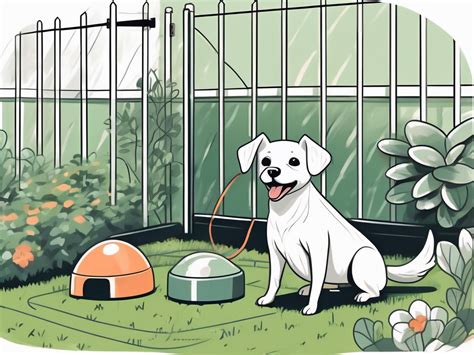Introduction

Small dogs possess an innate curiosity and love for exploration, often leading to potential dangers when left unsupervised outdoors. Wireless fences offer an innovative solution to this challenge, providing an invisible boundary that keeps your furry friend safely within the designated area. This guide delves into the world of small dog wireless fences, exploring their benefits, types, installation, and best practices for a secure and enjoyable outdoor experience.
Benefits of Small Dog Wireless Fences
-
Safety and Security: Wireless fences establish a virtual perimeter, ensuring your dog’s safety by preventing them from straying into hazardous areas, such as roads or bodies of water.
-
Peace of Mind: Knowing that your pet is secure within the designated area provides peace of mind and allows you to relax while your dog enjoys the outdoors.
-
Training Tool: Wireless fences can be an effective training aid, teaching your dog to respect boundaries and stay within the designated area without the need for physical barriers.
Types of Wireless Pet Fences
Underground Wire Fences: Utilizing a buried wire around the perimeter, these systems create a signal that triggers a warning tone or static correction when your dog approaches the boundary.
Radio Frequency Fences: These fences use a transmitter to emit radio waves that create an invisible boundary. A collar worn by the dog detects the signal and triggers a warning tone or static correction when it approaches the edge.
GPS Fences: GPS-based fences use a combination of GPS technology and a collar to pinpoint the dog’s location. When it crosses a predefined boundary, the collar sounds a warning tone or applies a static correction.
Installation and Setup
Underground Wire Fences:
- Dig a trench along the desired perimeter and bury the wire 2-4 inches deep.
- Connect the wire to the transmitter and create a loop to complete the circuit.
- Test the system thoroughly before allowing your dog to use it.
Radio Frequency Fences:
- Position the transmitter in a central location within the desired area.
- Adjust the signal strength to create a boundary around the perimeter.
- Fit your dog with a receiver collar and adjust the settings to the appropriate level of correction.
GPS Fences:
- Set up the base station indoors and connect it to the GPS network.
- Define the boundaries using the accompanying software.
- Fit your dog with a GPS collar and configure the settings for warning tones and corrections.
Tips for Effective Use
- Train your dog thoroughly to understand the boundaries and associate them with positive reinforcement.
- Adjust the correction level to the minimum setting necessary for effective containment.
- Regularly check the system’s functionality and battery life.
- Avoid using wireless fences in areas with strong electromagnetic interference, such as near power lines or electronic devices.
- Consider additional safety measures, such as a backup fence or physical barrier, to enhance security.
Common Mistakes to Avoid
- Inappropriate Boundaries: Setting boundaries that are too large or complex can create frustration and confusion for your dog.
- Over-reliance on Corrections: Excessive use of static corrections can damage the bond between you and your dog and undermine the training process.
- Lack of Training: Failing to properly train your dog before using a wireless fence can lead to boundary violations and ineffective containment.
- Improper Fit: An ill-fitting collar can cause discomfort or interfere with the receiver’s signal, reducing the system’s effectiveness.
Comparison of Fence Types
| Feature | Underground Wire | Radio Frequency | GPS |
|---|---|---|---|
| Installation Complexity | Moderate | Easy | Moderate |
| Visibility | Buried | Invisible | Invisible |
| Range | Limited to wire loop | Up to 1 acre | Up to several acres |
| Cost | Affordable | Mid-range | Expensive |
| Maintenance | Requires occasional wire repairs | Minimal | Battery replacement |
| Training Required | Moderate | Easy | Minimal |
Innovations and Applications
-
Artificial Intelligence-Powered Fences: Leveraging AI algorithms, these fences can adjust boundary settings based on the dog’s previous behavior and environment.
-
Multi-Pet Systems: Some wireless fences allow multiple transmitters and collars to accommodate multiple pets with varying levels of training and containment needs.
-
Geo-Fencing: This technology integrates with GPS fences to create virtual boundaries within designated areas, opening up possibilities for creating specific play zones or remote training sessions.
Conclusion
Small dog wireless fences offer a safe and effective solution for containing your furry companion outdoors while providing peace of mind. By choosing the right fence type, following proper installation procedures, and training your dog effectively, you can create a secure and enjoyable environment for your beloved pet. Remember to consider the individual needs of your dog and consult with a professional if you encounter any difficulties in the setup or use of your wireless fence.
